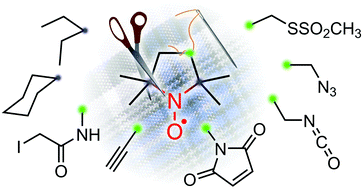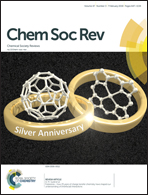Advances in the synthesis of nitroxide radicals for use in biomolecule spin labelling
Abstract
EPR spectroscopy is an increasingly useful analytical tool to probe biomolecule structure, dynamic behaviour, and interactions. Nitroxide radicals are the most commonly used radical probe in EPR experiments, and many methods have been developed for their synthesis, as well as incorporation into biomolecules using site-directed spin labelling. In this Tutorial Review, we discuss the most practical methods for the synthesis of nitroxides, focusing on the tunability of their structures, the manipulation of their sidechains into spin labelling handles, and their installation into biomolecules.

- This article is part of the themed collection: Celebrating our 2020 Prize and Award winners


 Please wait while we load your content...
Please wait while we load your content...